Science!!!
Alchemy Glassware

Alchemy glassware comprises various flasks, beakers, retorts, and distillation apparatuses traditionally used by alchemists in their quest to transmute base metals into noble metals, create the philosopher's stone, or concoct elixirs of life. These glass pieces are designed for the specific needs of chemical reactions and distillations.
Why It's Cool:
Alchemy glassware is the predecessor of modern laboratory glassware, embodying the fusion of science, mysticism, and art. Its intricate designs and the precision needed for alchemical processes highlight the meticulous nature of ancient scientific endeavors. The very shape and form of alchemy glassware evoke a sense of mystery and an era where science and magic were intertwined, capturing the imagination of those fascinated by the history of science and the mystical.
Vaseline Glass Jar

Vaseline glass, also known as uranium glass, contains small amounts of uranium, which gives it a pale greenish-yellow color. Under ultraviolet light, it fluoresces in a vivid green. Vaseline glass jars are collectible items, valued for their unique appearance and historical significance.
Why It's Cool:
The cool factor of Vaseline glass lies in its blend of art, science, and history. Its ability to glow under ultraviolet light speaks to the intriguing properties of uranium and the innovative spirit of glassmakers who experimented with materials to create objects of beauty. Owning a piece of Vaseline glass is like holding a piece of history that bridges the atomic age with artisan craft.
Draconex Hogwartsia Skull

Inspired by the fictional universe of Harry Potter, the "Draconex Hogwartsia" refers to a dragon species purportedly studied by wizards. Reproduction skulls of such mythical creatures are crafted for fans and collectors, blending fantasy with paleontological artistry.
Why It's Cool:
This reproduction skull captures the imagination, serving as a bridge between the realms of fantasy literature and the natural history of dragons as mythical creatures. It symbolizes the human fascination with mythical beasts and the desire to explore the boundaries of the known world, offering a tangible connection to the richly imagined worlds of fantasy literature.
Floating Moon
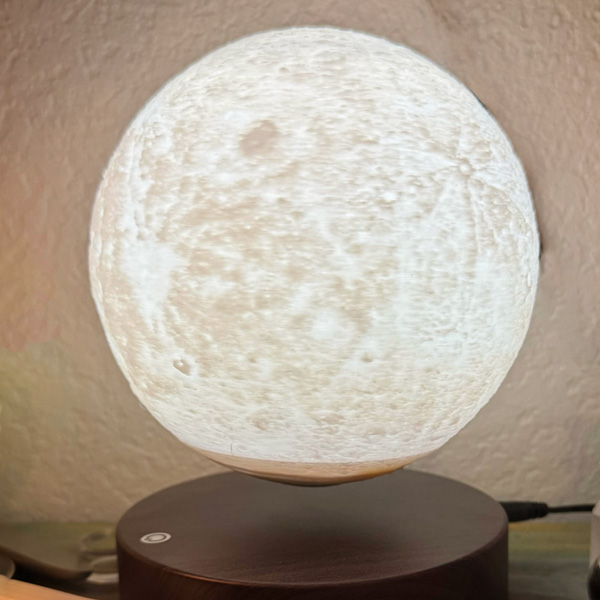
A magnetically floating moon lamp uses magnetic levitation to suspend a detailed replica of the moon in mid-air, often illuminated from within to mimic the lunar glow.
Why It's Cool:
This item captures the awe-inspiring beauty of the moon within the grasp of human technology, creating a mesmerizing visual effect that combines art, science, and design. It symbolizes humanity's enduring fascination with the cosmos and our continuous strive to recreate its wonders. The floating moon lamp serves as a daily reminder of our small place in the vast universe and the magic inherent in our natural world, made accessible through the marvels of modern technology.
Pythagoras Cup
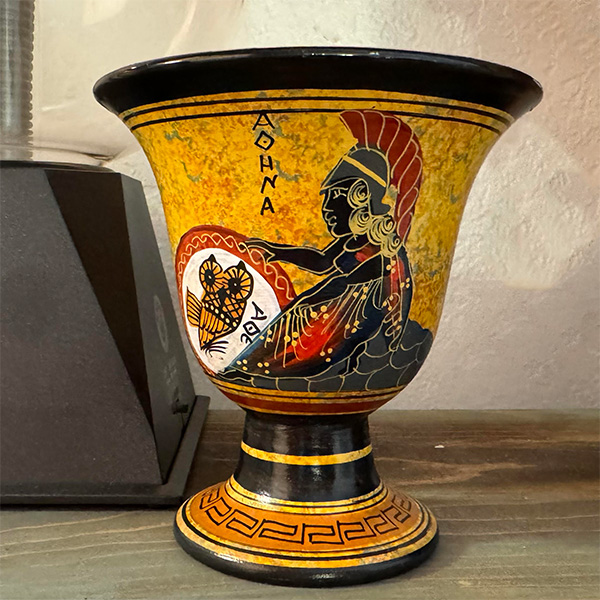
The Pythagoras Cup, also known as the "greedy cup," is an ancient Greek invention attributed to Pythagoras. It’s designed to spill its contents if filled beyond a certain point, thanks to a cleverly hidden siphoning system.
Why It's Cool:
This cup embodies the intersection of practical ingenuity and philosophical teaching. It's cool because it serves as a lesson in moderation and fairness, ingeniously using principles of physics to enforce ethical drinking. The Pythagoras Cup is a testament to the ancient Greeks' penchant for embedding lessons in everyday objects, showcasing how science, philosophy, and morality were intertwined in their understanding of the world.
Antikythera Device

The Antikythera device is an ancient Greek analog computer and orrery used to predict astronomical positions and eclipses for calendrical and astrological purposes. Reproductions of this device are based on extensive scientific research and imaging studies of the original artifact.
Why It's Cool:
The Antikythera device is often cited as the world's first computer, showing an astonishing level of mechanical sophistication for its time (circa 100 BC). The device's complex gearwork laid the groundwork for future developments in mechanics and computing, bridging ancient knowledge with modern technology. Reproductions of this device allow us to interact with ancient ingenuity, making tangible the intellectual achievements of our ancestors.
Lichtenberg Figure

Lichtenberg figures are branching electric discharges that sometimes appear on the surface or in the interior of insulating materials. They are created by high voltage electrical discharges traveling through the material, leaving behind a tree-like pattern of fractal branches.
Why It's Cool:
Lichtenberg figures capture the beauty of chaos and the underlying patterns in nature. They visually represent the randomness and order found in natural phenomena, from lightning strikes to river deltas. The process of creating and observing these figures marries science and art, providing a stunning visual representation of electrical forces at work. The fact that these intricate patterns can be created from electricity speaks to the unseen power and structure in the natural world, making them fascinating both as scientific artifacts and as works of art.
Ferrofluid

Ferrofluid is a liquid that becomes strongly magnetized in the presence of a magnetic field. Composed of nanoscale ferromagnetic particles suspended in a carrier fluid, ferrofluid is typically created from compounds like magnetite.
Why It's Cool:
Ferrofluid is visually mesmerizing; it spikes up in dramatic patterns in response to magnetic fields, making it a popular display in science classrooms and art installations. The fluid's ability to form peaks and valleys based on magnetic influence showcases the direct and dynamic interactions between magnetic fields and materials, providing a tactile and striking visualization of magnetic forces at work.
Bismuth Kinetic Levitation Sculpture
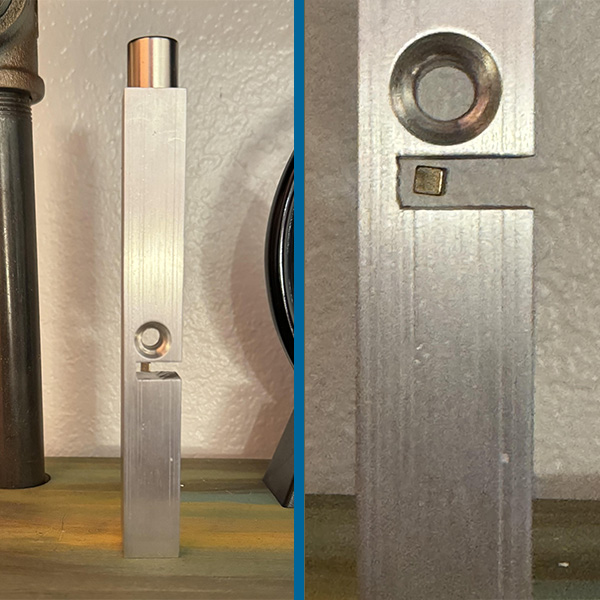
It's not your imagination, the magnet is simply floating in this sculpture.
Why It's Cool:
Bismuth is the most dimagnetic substance on Earth. What is dimagnetism? It turns out that there are a few substances where if you apply a magnetic field to them they will repel other magnets. This sculpture will float tiny rare-earth magnets in either the slot or the hole of the sculpture. You can use a straw to make the magnet spin and since it's floating there's very little friction. It's pretty cool.
Narwhal Horn
Equus unicornis

A narwhal horn reproduction replicates the long, spiral tusk of the narwhal, a real marine mammal often associated with the legendary unicorn due to its horn-like tusk. Historically, narwhal tusks were sometimes sold as unicorn horns, prized for their supposed magical properties.
Why It's Cool:
The connection between narwhal tusks and unicorn horns embodies the human penchant for myth-making and the blending of natural wonder with fantasy. This reproduction serves as a symbol of exploration, curiosity, and the enchanting stories we create around the natural world. It highlights the narwhal's unique place in marine biology while celebrating the timeless appeal of mythical creatures like the unicorn.
Megalodon Tooth
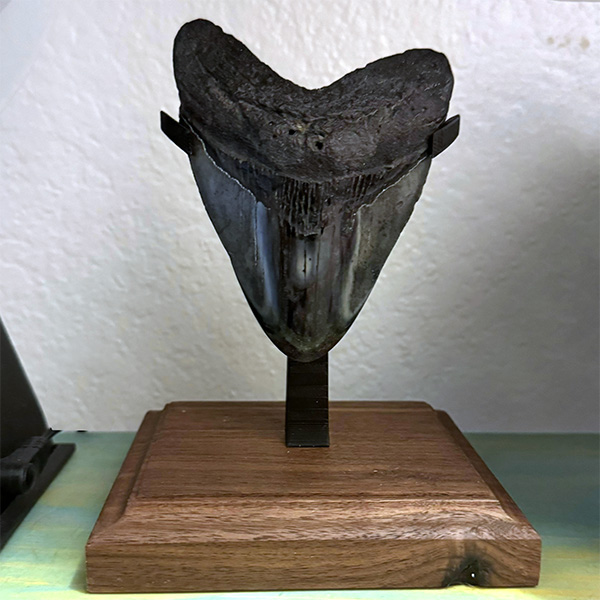
A Megalodon tooth comes from the Megalodon, an extinct species of shark that lived approximately 23 to 3.6 million years ago, and is thought to have been one of the largest and most powerful predators in vertebrate history. These teeth can be over 7 inches in length.
Why It's Cool:
Owning a Megalodon tooth is like holding a piece of ancient Earth’s history in your hands. These teeth are not only massive but also a testament to the gigantism of prehistoric marine life. They serve as a stark reminder of the biodiversity of the past and the evolutionary changes that have occurred over millions of years, sparking imagination about what the world’s oceans once harbored.
Radiometer

A radiometer, or light mill, consists of an airtight glass bulb containing a partial vacuum and a set of vanes which are mounted on a spindle. The vanes rotate when exposed to light, with darker surfaces accelerating faster.
Why It's Cool:
The radiometer is a brilliant demonstration of the principles of thermal energy and the momentum transfer from light particles. Although once thought to be powered by the pressure of light photons, it is actually the more subtle thermal transpiration effect that makes it spin. This makes it a fascinating object for both education and decoration, bridging the gap between scientific theory and visually observable phenomena.
Cold Brew Coffee Maker

A cold brew coffee maker is a device used to brew coffee at low temperatures, usually over a period of several hours to an entire day, depending on the desired strength. This method uses time, rather than heat, to extract oils, caffeine, and sugars from coffee beans.
Why It's Cool:
Cold brew coffee makers transform the coffee brewing process, emphasizing patience and subtlety. The resulting coffee is distinctively smooth and sweet, often with a chocolatey richness that is less acidic than coffee made with hot water. This method highlights how changes in temperature and time can vastly alter chemical extraction processes, providing a practical and enjoyable application of scientific principles in everyday life.
Magnetically Shrunk Quarter
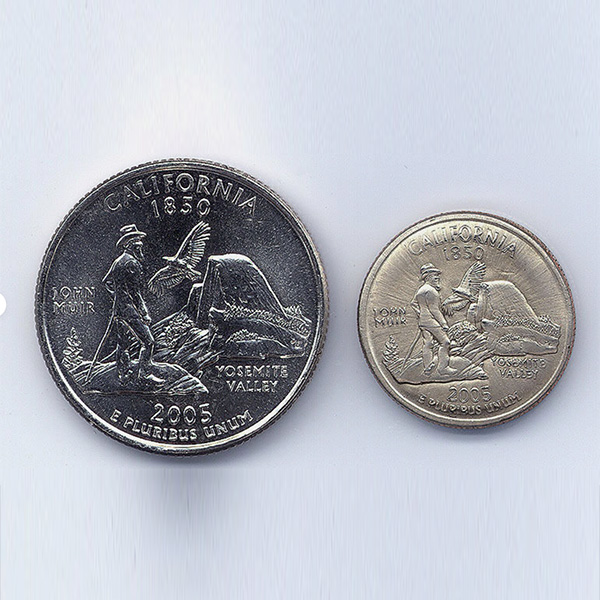
This magnetically shrunk quarter is a U.S. quarter that has been compressed in size using a process involving very high magnetic fields generated by a device called a coin shrinker or can crusher to the diameter of a dime.
Why It's Cool:
The process involves discharging a capacitor bank through a coil surrounding the quarter, generating a rapidly changing magnetic field that induces inward pressure, literally shrinking the coin. Because of the near-instantaneous nature of this shrinking, fine detail is maintained. This not only demonstrates principles of electromagnetism and Lenz’s Law in a dramatic fashion but also results in a unique and compact memento of high-energy physics in action.
Piece of the Cielo de Campo Meteorite

The Campo del Cielo refers to a group of iron meteorites found in Argentina that are believed to have fallen in a meteor shower more than 4,000 years ago.
Why It's Cool:
Owning a piece of the Cielo de Campo meteorite is like having a real star artifact. Each piece is a direct link to the cosmos, offering a tangible connection to the vast universe beyond Earth. Meteorites like these not only contribute to our understanding of the solar system’s history but also inspire awe and wonder about the origins of our planet and the materials that shaped it.
Miniature Tesla Coil
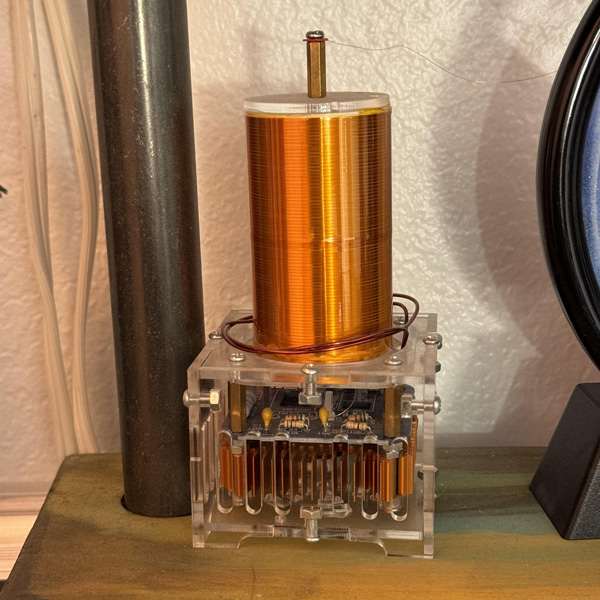
A miniature Tesla coil is a scaled-down version of the Tesla coil invented by Nikola Tesla in the late 1800s. It produces high-voltage, low-current, high-frequency alternating-current electricity, creating impressive electrical arcs and corona discharges visibly emanating from its surface.
Why It's Cool:
The miniature Tesla coil not only demonstrates fundamental principles of electromagnetism and high-frequency electrical engineering but does so with a visual spectacle that captivates and educates. Its ability to generate plasma arcs that can be seen and heard brings the magic of electricity to life, merging scientific inquiry with an almost magical display. It exemplifies Tesla's visionary contributions to electrical engineering and his belief in making scientific wonders accessible and entertaining.
Nebra Sky Disc
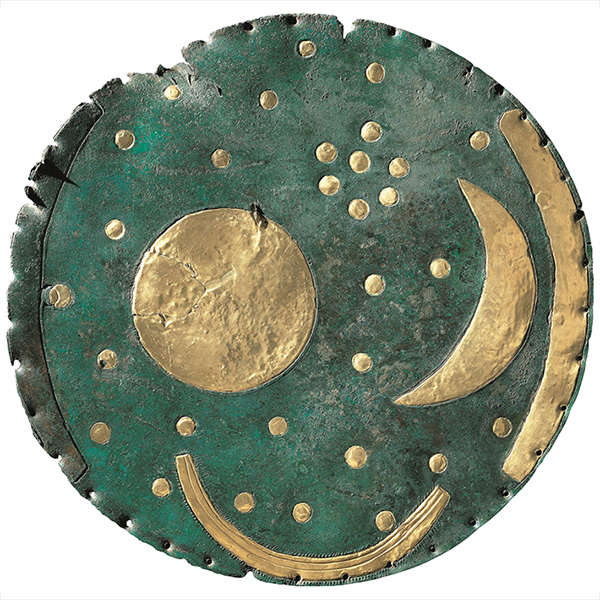
The Nebra Sky Disc is a bronze disc of around 30 cm diameter, believed to be an astronomical instrument as well as a religious artifact from the Bronze Age, around 1600 BCE. Reproductions of this disc allow for a hands-on examination and appreciation of one of the oldest known representations of the night sky.
Why It's Cool:
The Nebra Sky Disc reproduction connects us directly to the astronomical knowledge and artistic expression of our ancestors. It's cool because it serves as a tangible link to humanity's timeless fascination with the cosmos, representing a remarkable combination of early science and spirituality. The disc's precise depiction of celestial bodies underscores the sophistication of prehistoric peoples' astronomical observations and their desire to harmonize their earthly life with the cosmos's cycles.
Phaistos Disc
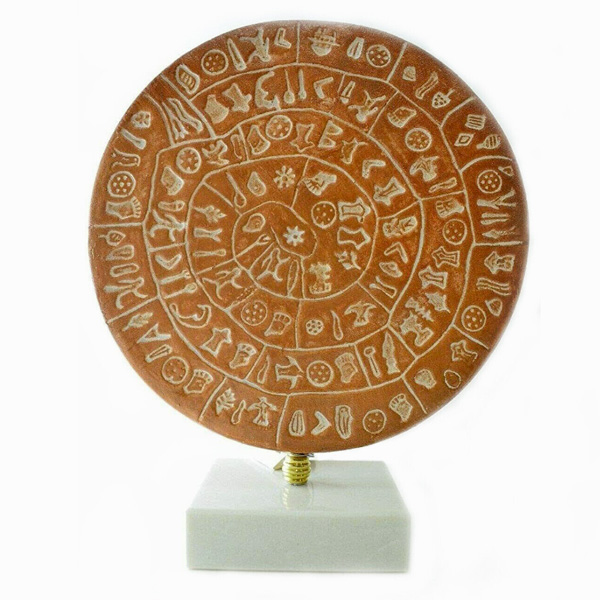
The Phaistos Disc is a mysterious clay disc, discovered in Crete, dating back to the 2nd millennium BCE. It is covered on both sides with a spiral of stamped symbols that remain undeciphered, making it a captivating puzzle from the ancient world.
Why It's Cool:
The allure of the Phaistos Disc lies in its undeciphered code, representing one of archaeology's most intriguing mysteries. It's a testament to the complexity and richness of ancient cultures and their lost knowledge and languages. The disc challenges us to rethink our assumptions about historical timelines and the development of writing and communication, offering a tangible mystery that spans millennia.
Gilgamesh Tablet
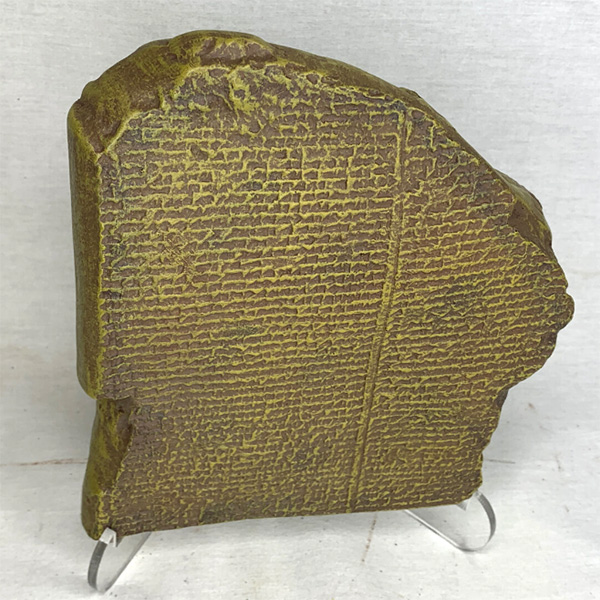
The Gilgamesh Tablet is an ancient artifact inscribed with part of the Epic of Gilgamesh, one of the earliest known works of literary fiction. The tablets date back to the third millennium BCE and were discovered in the ruins of Mesopotamia.
Why It's Cool:
The Gilgamesh Tablet is a direct connection to humanity's earliest literary endeavors, offering insights into the values, beliefs, and daily life of ancient Mesopotamian society. It's cool because it represents the universal human quest for meaning, the exploration of themes like friendship, the fear of death, and the pursuit of glory and immortality. These themes resonate through centuries, highlighting the continuity of human experience and the timeless nature of our deepest concerns and aspirations.
Hand Boiler

A hand boiler or love meter consists of a sealed glass container filled with a colored liquid and a series of tubes. When held in the hand, the liquid inside quickly travels from one part of the container to another, appearing to boil.
Why It's Cool:
The hand boiler is an excellent demonstration of Charles’s Law and vapor-liquid equilibrium, cleverly disguised as a playful novelty toy. The heat from a person's hand causes the liquid to expand, decreasing its density and causing it to rise through the tubes. This fascinating interplay between temperature and pressure packed into a visually appealing gadget makes it a popular and educational tool in demonstrating fundamental principles of thermodynamics.
Klein Bottle

The Klein Bottle is a non-orientable surface with no identifiable "inside" or "outside," essentially a three-dimensional Mobius strip. It’s a mathematical model that defies common sense, as it only exists fully in four dimensions.
Why It's Cool:
The Klein Bottle is a marvel of mathematical thought, embodying the beauty and complexity of higher-dimensional mathematics. It challenges our perceptions of space and volume, offering a tangible paradox that can be explored and pondered. As an object, it serves as a bridge between the abstract world of mathematical theories and the physical universe, making it a fascinating symbol of the quest for understanding the foundations of reality.
Galileo Thermometer

A Galileo Thermometer consists of a sealed glass tube filled with a clear liquid and several glass vessels of varying densities. As the temperature changes, the vessels rise or fall, providing a temperature reading.
Why It's Cool:
The Galileo Thermometer is not just a tool for measuring temperature but also a piece of scientific art. It makes the principles of buoyancy and density visually captivating, turning a simple act of reading the temperature into an opportunity to appreciate the elegance of physical laws. It stands as a tribute to Galileo Galilei’s contributions to physics and the enduring appeal of integrating scientific knowledge with aesthetic design.
Plasma Globes
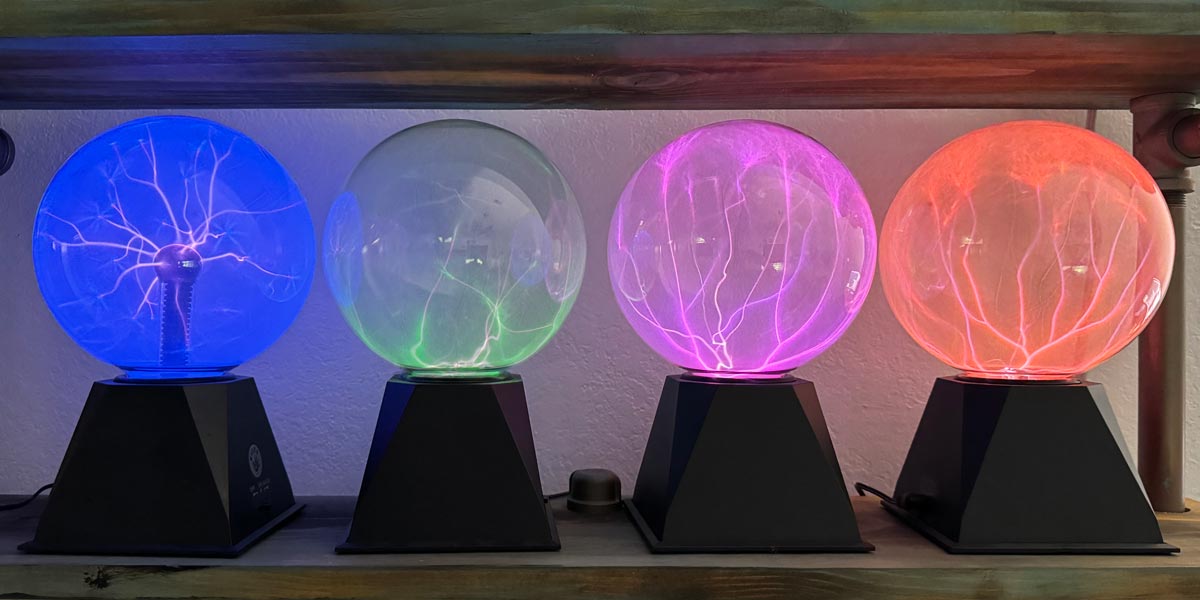
Plasma globes are glass spheres filled with a mixture of various gases at low pressure, through which electric currents flow, creating captivating plasma streams that extend from the center to the glass.
Why It's Cool:
Plasma balls are a hands-on demonstration of plasma, often described as the fourth state of matter. They bring high-voltage physics into living rooms and classrooms, allowing for direct interaction with electric currents and magnetic fields. The visual display of tendrils of light that respond to touch captivates the imagination, offering a stunning visual way to explore fundamental concepts of electromagnetism and the nature of matter.
Leyden Jar
The Leyden Jar is an early form of a capacitor, invented in the 18th century, capable of storing and discharging electricity. It consists of a glass jar with metal coatings on the inside and outside surfaces.
Why It's Cool:
The Leyden Jar represents a pivotal moment in the understanding and experimentation with electricity, marking the dawn of modern electrical science. Its invention enabled significant advances in the study of electrical phenomena and contributed to the development of technologies that shape our world today. The ability to store electricity was a concept as revolutionary in its time as the development of the first battery, highlighting the ingenuity and curiosity that drive scientific discovery.
Dwarf Elephant Skull
Homo gigantus cyclopis
Dwarf elephant skulls feature a large central nasal cavity that may have inspired Cyclops myths among ancient Greeks who discovered them. Reproductions of these skulls provide insight into how prehistoric finds influenced myth and legend.
Why It's Cool:
The dwarf elephant skull reproduction is fascinating because it illustrates a tangible link between paleontology and mythology. It suggests how ancient discoveries could be woven into fantastical tales, showing the human inclination to fill gaps in understanding with stories of giants and monsters. This connection between the natural world and myth underscores our desire to make sense of the past through the lens of imagination, blending science with the stories we tell to explain the unknown.
https://deathelevated.blogspot.com/2018/04/was-cyclops-inspired-by-elephants.html
Pyramidal Prism
A pyramidal prism is a geometric object made of glass, crystal, or another transparent material, shaped like a pyramid. It refracts light, breaking it into its constituent spectral colors, much like a triangular prism but with the added complexity of the pyramid shape.
Why It's Cool:
The pyramidal prism isn't just a tool for exploring the properties of light and color; its unique shape adds an extra layer of fascination, creating complex and beautiful patterns of light. It symbolizes the intersection of geometry, physics, and art, demonstrating how simple principles can yield endlessly captivating phenomena. The ability to dissect light into a rainbow spectrum using such a simple, elegant form underscores the beauty and simplicity underlying complex physical laws.